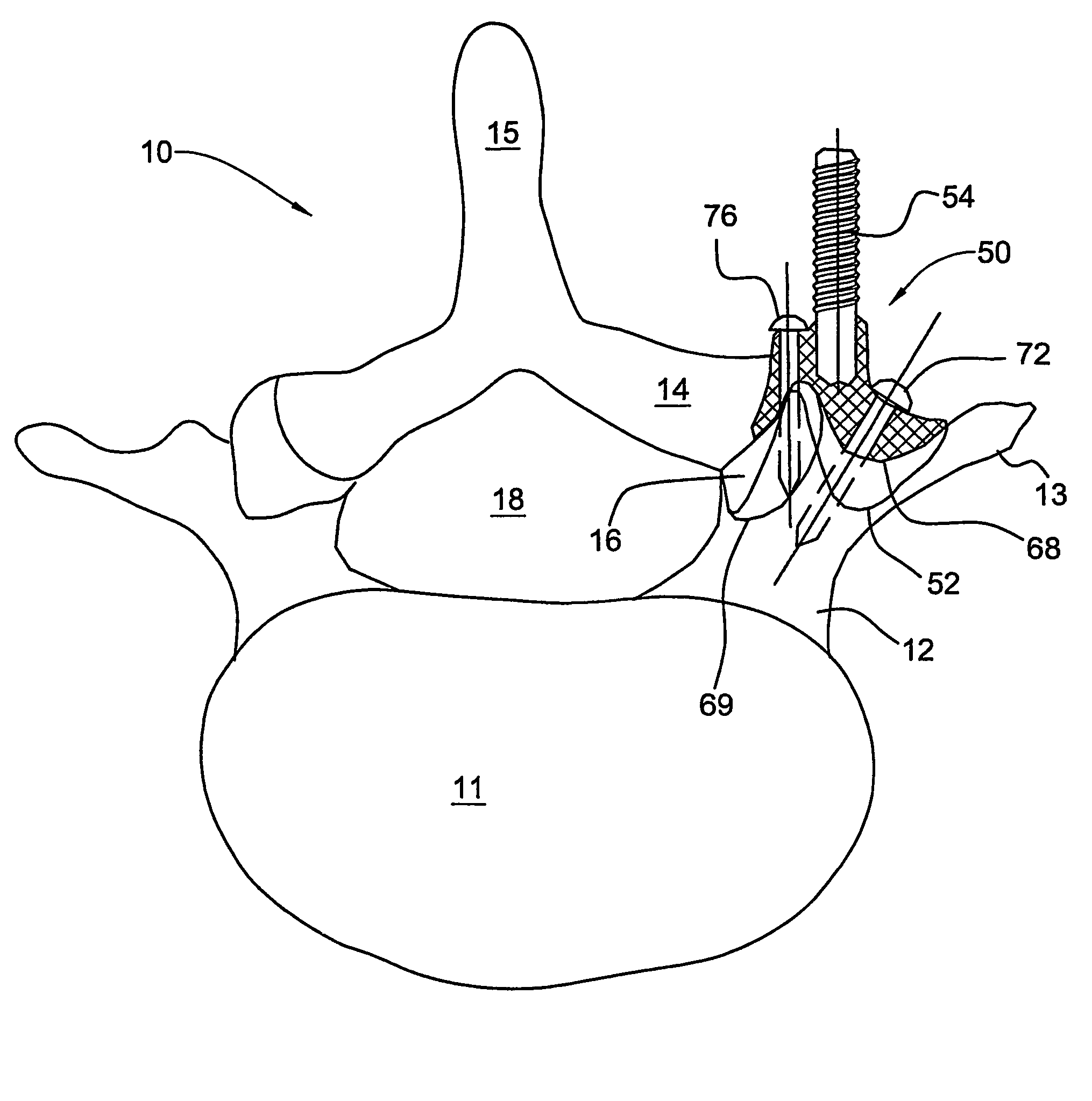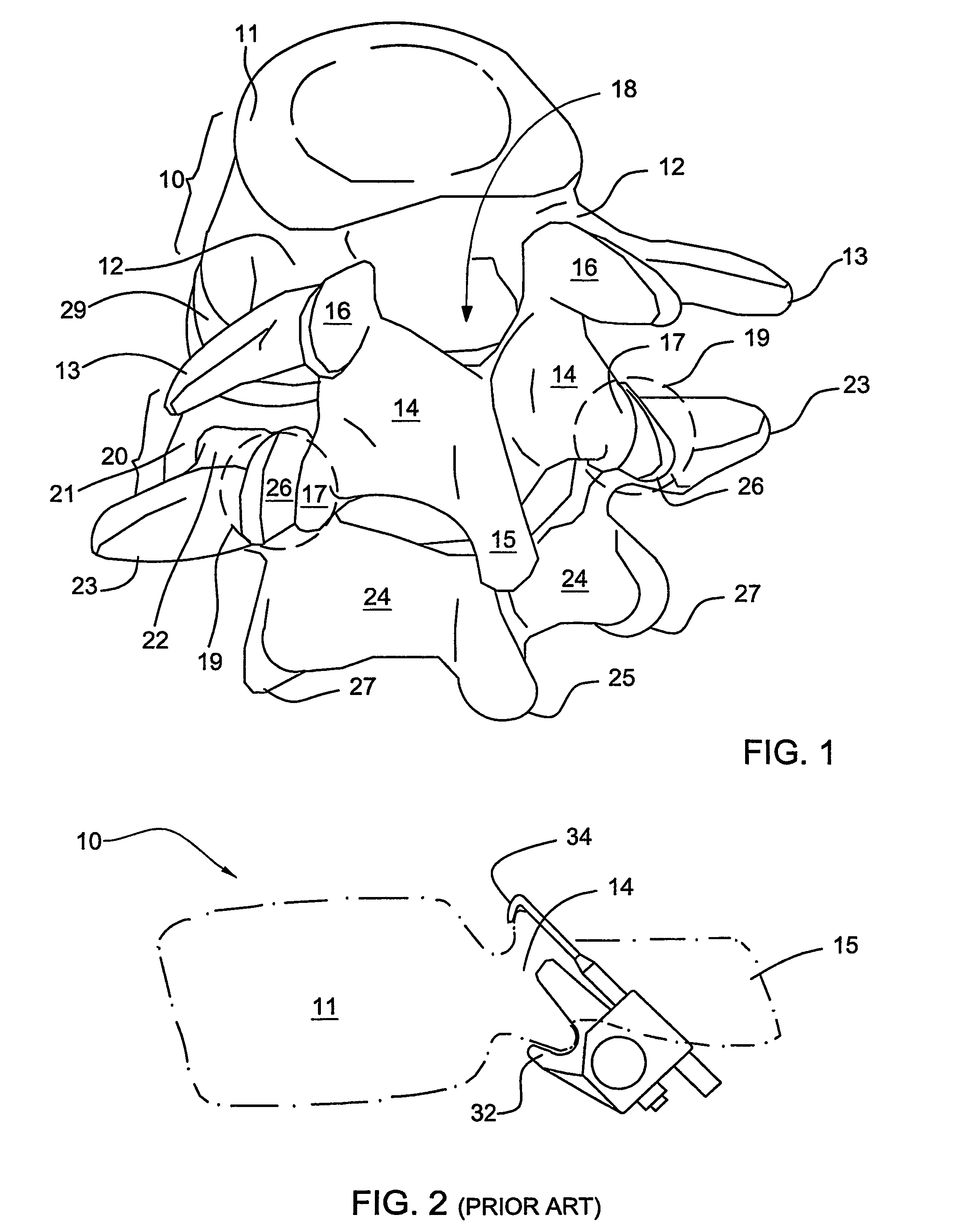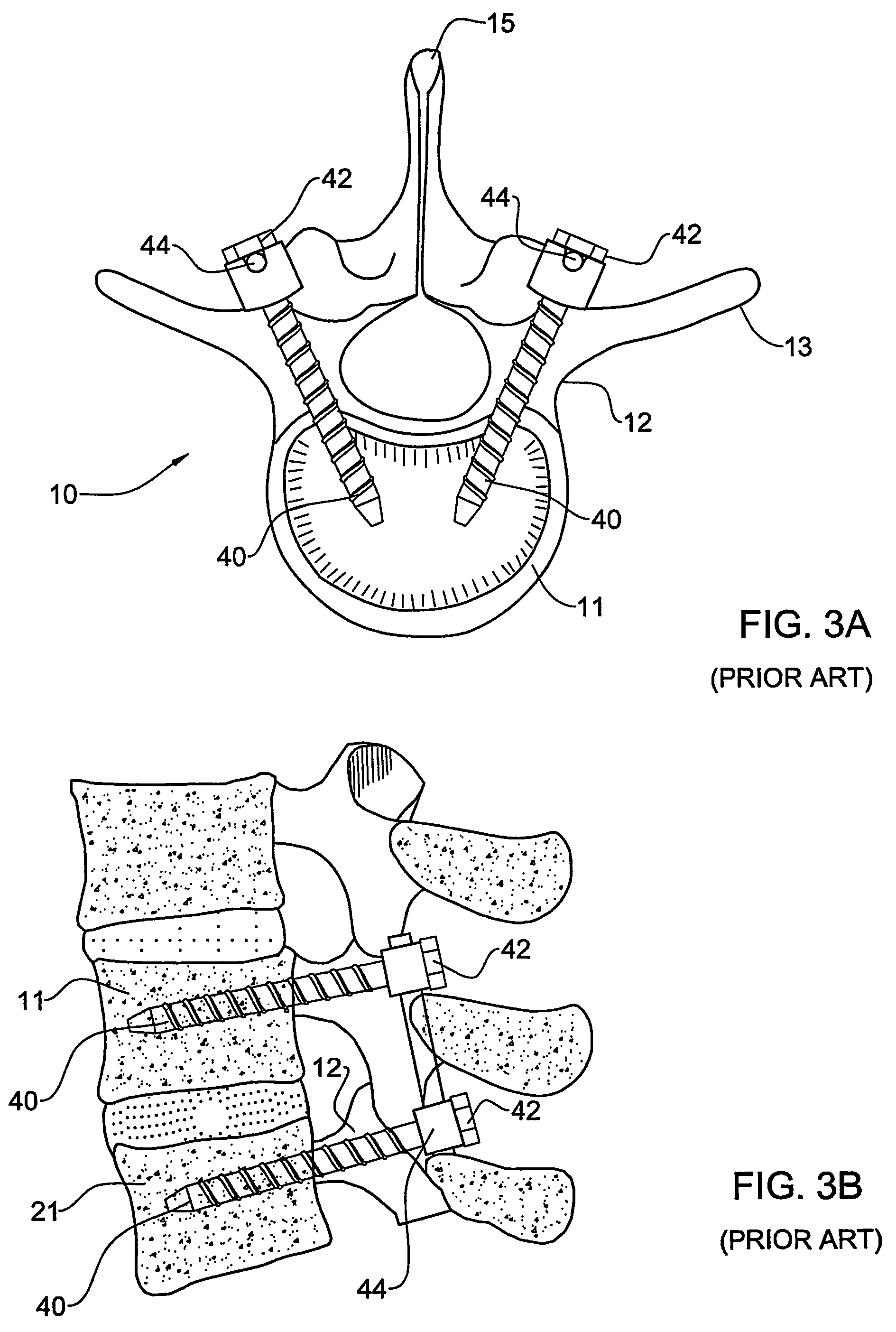Orthopedic clamps
a technology of orthopedic surgery and clamps, applied in the field of orthopedic surgery, can solve the problems of unnecessarily limited movement of the spine, unfavorable patient safety, and increased risk of surgery, and achieve the effects of less surgical cuts, less exposed bone tissue, and less invasive surgery
- Summary
- Abstract
- Description
- Claims
- Application Information
AI Technical Summary
Benefits of technology
Problems solved by technology
Method used
Image
Examples
Embodiment Construction
[0070]FIGS. 6A to 6E are schematic views of a vertebral fusion clamp 50 according to an embodiment of the present invention, the views being taken from different directions to illustrate the structure of the element. The views are taken respectively from the right side (FIG. 6A), from the rear side (FIG. 6B), from the front side (FIG. 6C), from above (FIG. 6D) and from beneath (FIG. 6E). The vertebral fusion clamp 50 comprises a body 52 and an integral threaded rod 54 for attachment of a fusion plate or rods.
[0071]The body 52 has unique shape including a saddle surface 56 and an arcuate surface 58. The saddle surface 56 is defined generally between a down-turned arch 60 and an upturned arch 62 lying in transverse planes and having a common point 64 (saddle point). The arcuate surface 58 is defined generally by a down-turned arch 66 (as seen best in FIG. 6A) and merges smoothly with the saddle surface 56. The top-most points of the arcuate surface 58 are higher than the arch 60.
[0072...
PUM
 Login to View More
Login to View More Abstract
Description
Claims
Application Information
 Login to View More
Login to View More - R&D
- Intellectual Property
- Life Sciences
- Materials
- Tech Scout
- Unparalleled Data Quality
- Higher Quality Content
- 60% Fewer Hallucinations
Browse by: Latest US Patents, China's latest patents, Technical Efficacy Thesaurus, Application Domain, Technology Topic, Popular Technical Reports.
© 2025 PatSnap. All rights reserved.Legal|Privacy policy|Modern Slavery Act Transparency Statement|Sitemap|About US| Contact US: help@patsnap.com



